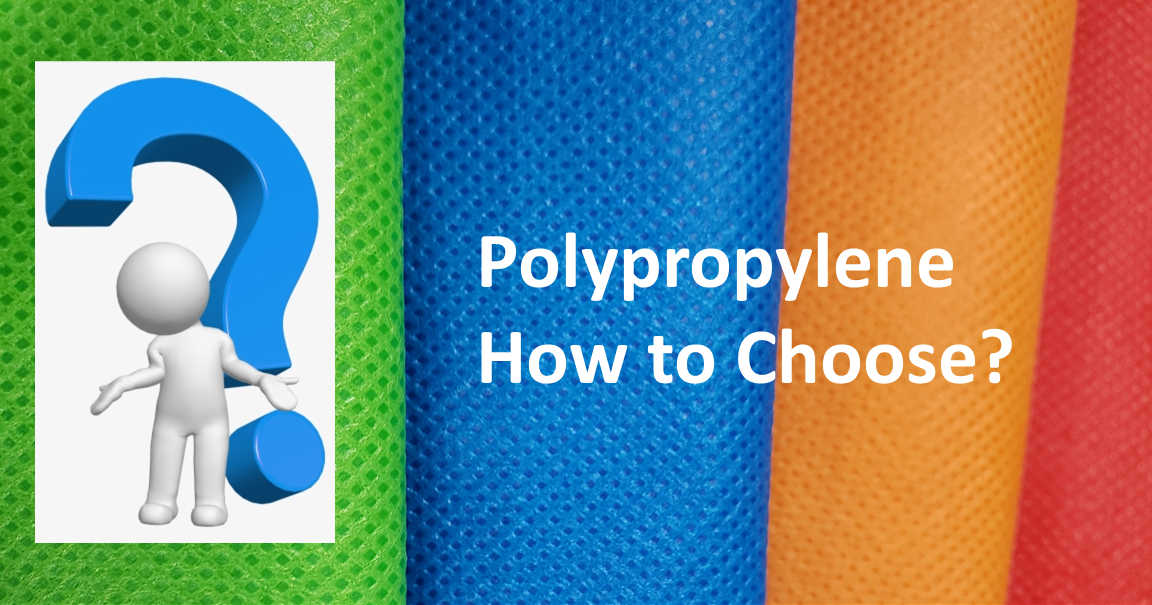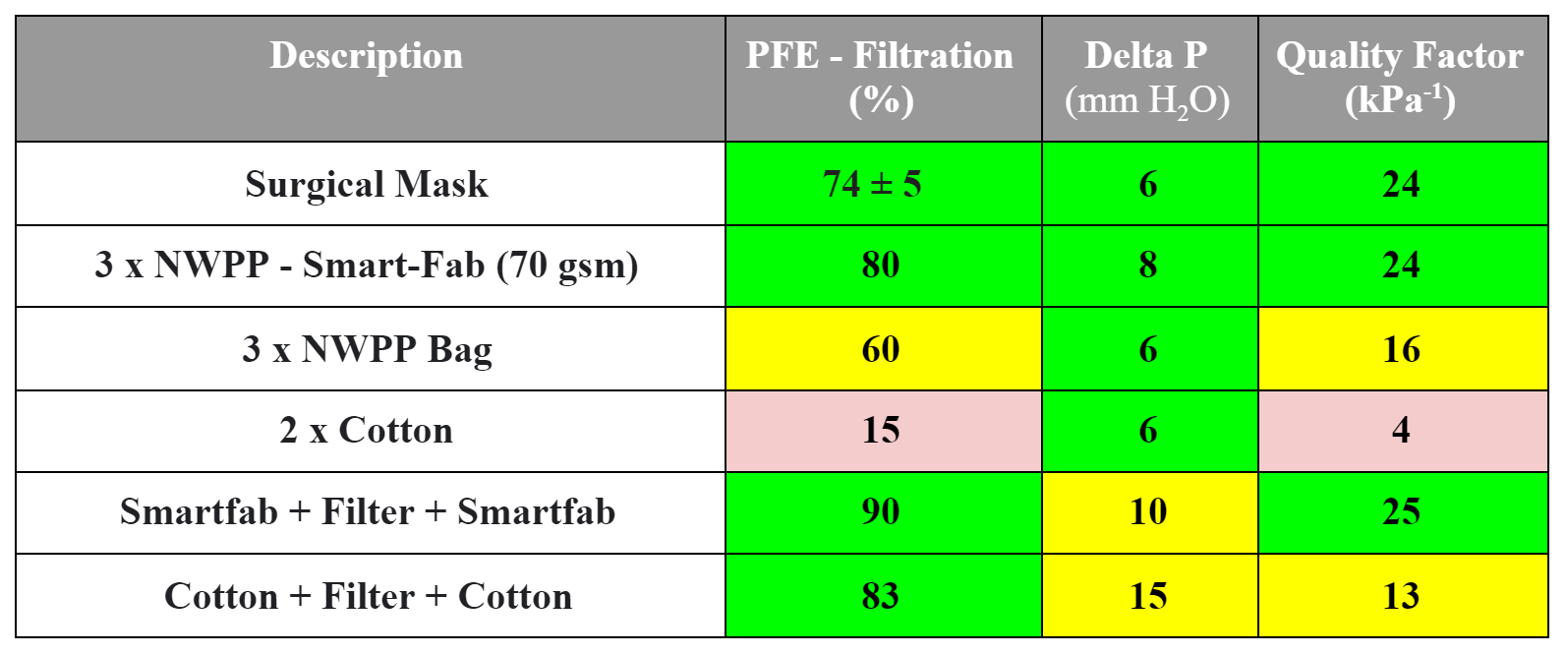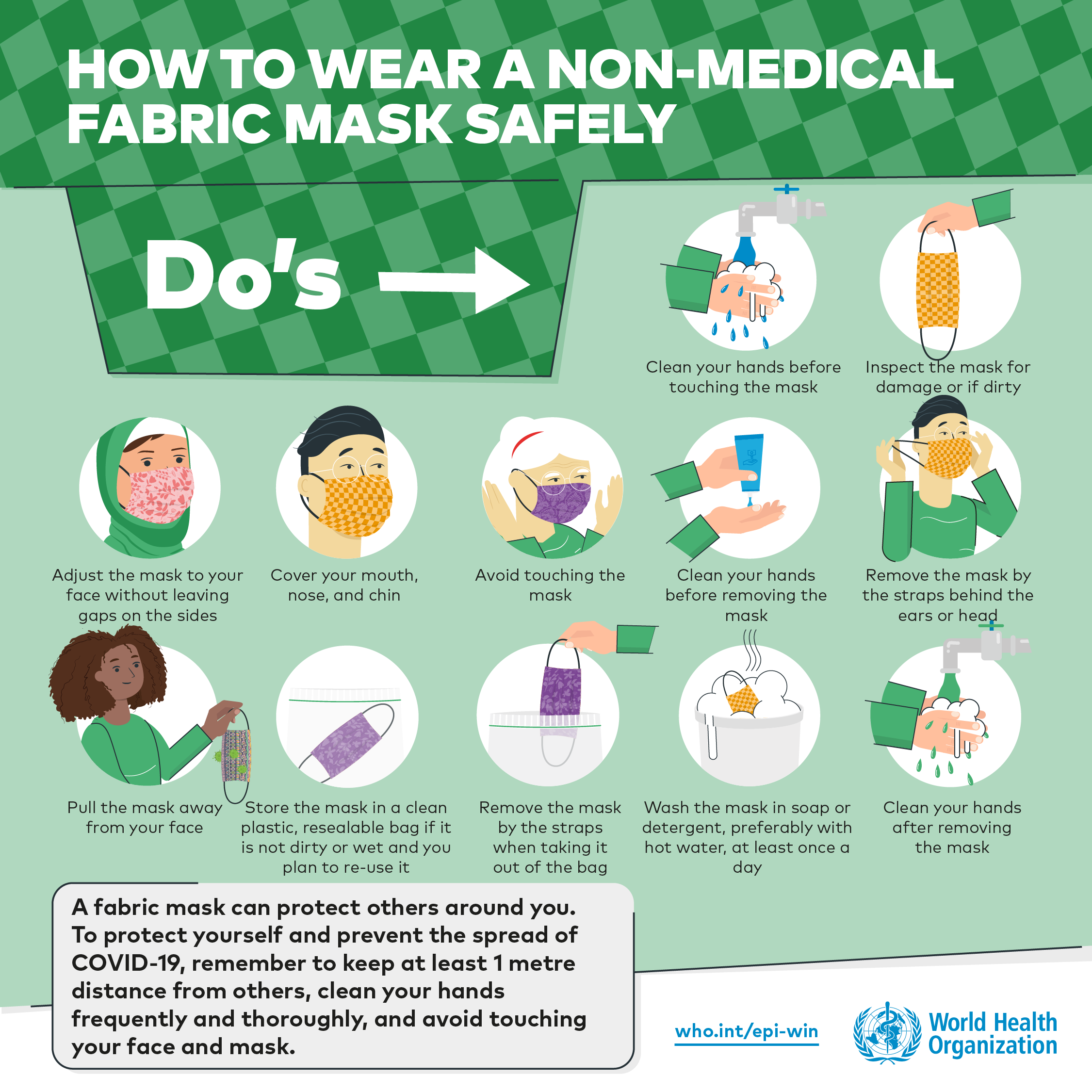Mask Math/Science Vignette: Mask Straps According to the guidance released by the WHO in December mask straps should be designed to withstand at least 10 lbs of force ( 44.5 Newtons). The materials that most straps are constructed from (e.g., cotton straps and silicone bands) easily meet these requirements. However, we’ve seen a number of […]
Finding and Selecting Polypropylene for Washable Masks
In this post we discuss how we think about selecting spunbond nonwoven polypropylene (NWPP) fabrics for washable masks, where we have found spunbond NWPP, and why we’ve chosen Smart-Fab® Double-Thick for our next round of testing. Our Mission Our mission is to share information with the public about the best emerging mask science to help […]
Research Highlights: NWPP Filtration Efficiency from Long et al 2020
This post is the first in a series of “Research Highlights” where we discuss select data and research from the literature in the context of community mask making efforts. In this post, we take a look at the filtration and breathability data for nonwoven polypropylene (NWPP) mask materials presented in: Long KD, Woodburn EV, Berg […]
5 Key Considerations For Window Masks
One of the challenges with face masks is that they often cover key facial features and expressions that are important for communicating speech and emotions. For many people, this means missing out on smiles, and having a little bit more trouble understanding other people in noisy environments. For people that are deaf, hard of hearing, […]
3 Easy DIY Mask Tests
In an ideal world, the safety and efficacy of all of the fabrics and materials used in handmade masks for COVID-19 would be tested using the same standards and facilities used by researchers and large manufacturers. Unfortunately, very few people have access to these resources. In this post we provide instructions for three easy DIY […]
WHO Guidance on Face Masks Changes
Surprising New Guidance from the WHO The WHO guidance on face masks for COVID-19 has changed to include the recommendation that the general public use fabric masks in public settings where physical distancing can’t be achieved and provides specific guidance on mask layers and materials. According to the World Health Organization (WHO), the ideal fabric […]
Fabric Face Masks: Cleaning and Disinfection
Reusable fabric masks should be cleaned and/or disinfected before each use to reduce risks associated with COVID-19 AND other potentially infectious microorganisms (e.g. bacteria, viruses, and fungi). Although the general principles of mask cleaning and disinfection are the same for most fabric masks, details will vary depending on specific mask designs, features, and materials. These […]
A Breathable Combination: An N95 plus a NWPP Mask Cover
As a result of the COVID-19 pandemic, there are global shortages of N95 respirators resulting in large scale adoption of procedures and policies for the extended use and re-use of N95 respirators. In this post we do a deeper dive into the quantitative breathability data for the MakerMask: Cover, a breathable N95 mask cover. The […]
Label Me A Face Mask: FDA Labeling Requirements
Almost everything comes with a label, from food to clothing to medicine to medical devices, and according to the FDA, face masks and cloth face coverings should come with labels too. More specifically, the Emergency Use Authorization for Face Masks released by the FDA April 24, 2020, includes labeling requirements for masks that are being […]
The Big Four: Criteria for Fabric Mask Materials for COVID
Ésta immersión profunda mira al criterio “Cuatro Grande” evaluado en evaluaciones preliminarias de materiales de máscaras comunitarias: cáracteristicas de los materiales, respirabilidad, repelencia al agua, y opcións para disinfección. Más especificamente, enfocamos en polipropileno no tejido (PPNT), que está usado comunmente para máscaras comerciales. A pesar de que PPNT ideal de grado médico no está disponible para uso comunitario, PPNT está disponible comunmente en diferentes pesos y grados para otros usos del hogar y/o otros propósitos comerciales, como bolsas reusables de compras. Aquí tomamos una mirada más profunda a los 4 criterio peliminares considerado cuando evaluando fuentes potenciales de PPNT.











